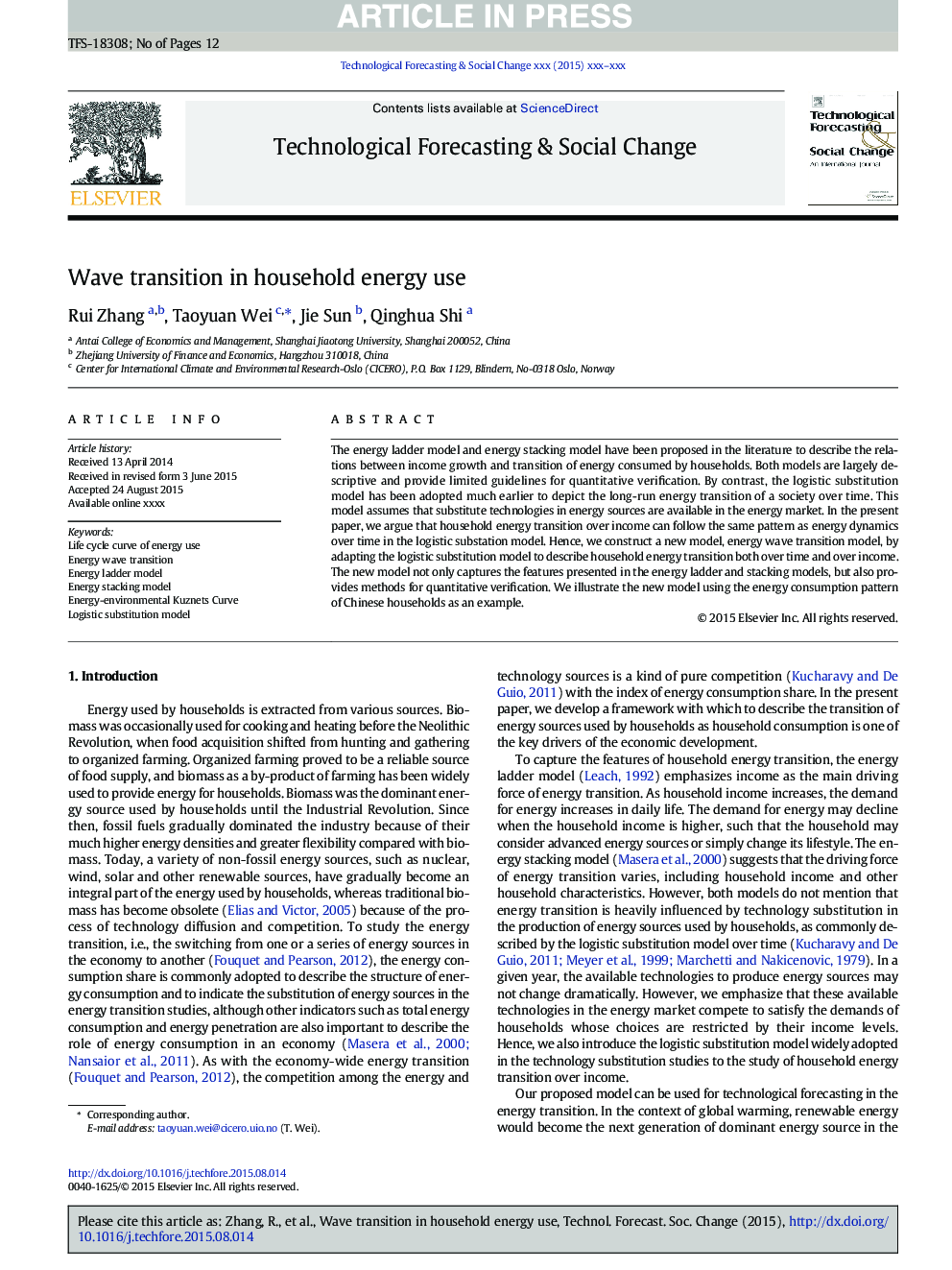| کد مقاله | کد نشریه | سال انتشار | مقاله انگلیسی | نسخه تمام متن |
|---|---|---|---|---|
| 7256312 | 1472398 | 2016 | 12 صفحه PDF | دانلود رایگان |
عنوان انگلیسی مقاله ISI
Wave transition in household energy use
ترجمه فارسی عنوان
انتقال موج در استفاده از انرژی خانگی
دانلود مقاله + سفارش ترجمه
دانلود مقاله ISI انگلیسی
رایگان برای ایرانیان
ترجمه چکیده
مدل نردبان انرژی و مدل انباشت انرژی در ادبیات برای توصیف رابطه بین رشد درآمد و انتقال انرژی مصرف شده توسط خانوارها پیشنهاد شده است. هر دو مدل عمدتا توصیفی هستند و دستورالعمل های محدودی برای تایید کمی ارائه می دهند. در مقابل، مدل جایگزینی لجستیک خیلی زود به تصویب رسیده است تا تصویری از گذار انرژی طولانی مدت یک جامعه را در طول زمان نشان دهد. این مدل فرض می کند که فناوری های جایگزین در منابع انرژی در بازار انرژی موجود است. در این مقاله، ما استدلال می کنیم که انتقال انرژی خانوار از طریق درآمد می تواند از همان الگو به عنوان پویایی انرژی در طول زمان در مدل پست لجستیک پیروی کند. از این رو، با مدل سازی مدل جایگزینی لجستیک برای توصیف انتقال انرژی خانوار در طول زمان و بیش از حد درآمد، مدل جدیدی از مدل انتقال انرژی موج را ایجاد می کنیم. مدل جدید نه تنها ویژگی های ارائه شده در نردبان انرژی و مدل های انباشته، بلکه همچنین روش هایی برای تایید کمی فراهم می کند. ما مدل جدید را با استفاده از الگوی مصرف انرژی خانوارهای چینی نشان می دهیم.
موضوعات مرتبط
علوم انسانی و اجتماعی
مدیریت، کسب و کار و حسابداری
کسب و کار و مدیریت بین المللی
چکیده انگلیسی
The energy ladder model and energy stacking model have been proposed in the literature to describe the relations between income growth and transition of energy consumed by households. Both models are largely descriptive and provide limited guidelines for quantitative verification. By contrast, the logistic substitution model has been adopted much earlier to depict the long-run energy transition of a society over time. This model assumes that substitute technologies in energy sources are available in the energy market. In the present paper, we argue that household energy transition over income can follow the same pattern as energy dynamics over time in the logistic substation model. Hence, we construct a new model, energy wave transition model, by adapting the logistic substitution model to describe household energy transition both over time and over income. The new model not only captures the features presented in the energy ladder and stacking models, but also provides methods for quantitative verification. We illustrate the new model using the energy consumption pattern of Chinese households as an example.
ناشر
Database: Elsevier - ScienceDirect (ساینس دایرکت)
Journal: Technological Forecasting and Social Change - Volume 102, January 2016, Pages 297-308
Journal: Technological Forecasting and Social Change - Volume 102, January 2016, Pages 297-308
نویسندگان
Rui Zhang, Taoyuan Wei, Jie Sun, Qinghua Shi,
